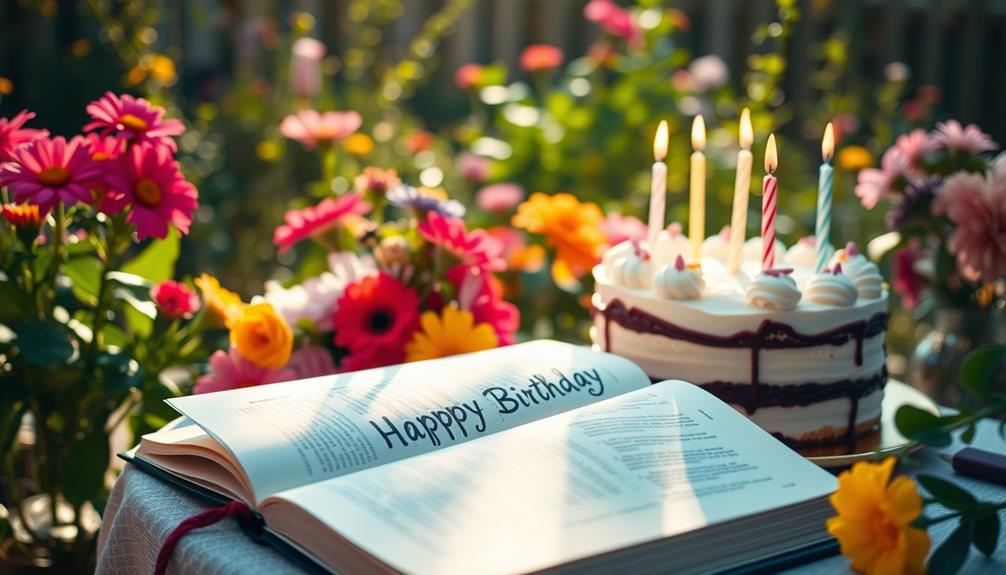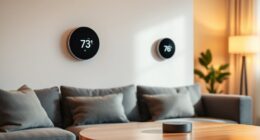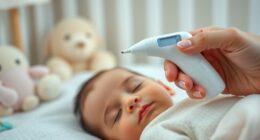Batik isn't just a beautiful textile; it's a piece of rich cultural heritage you're missing in your home. Originating from Indonesia, Batik features vibrant colors and intricate patterns that tell stories of history and symbolism. By incorporating items like cushion covers or wall art, you add depth and character to your space. The Phoenix motif, for instance, represents interdependence, while other designs reflect themes of regeneration and environmental balance. Plus, using Batik supports local artisans and sustainable practices. Want to discover how to seamlessly integrate these stunning designs into your decor? There's so much more waiting for you.
Key Takeaways
- Batik textiles feature vibrant colors and intricate patterns, adding a unique cultural touch to your home decor.
- Incorporating Batik items like cushion covers and wall hangings creates a narrative that reflects Indonesian heritage.
- Each Batik motif carries rich symbolism, offering deeper meaning beyond mere decoration in your living space.
- Supporting local artisans through Batik promotes sustainable practices in the textile industry while celebrating artistic expression.
- Modern Batik designs blend traditional artistry with contemporary aesthetics, appealing to diverse home decor styles.
Historical Significance of Batik

Batik, with its roots deeply embedded in Indonesia's rich history, stands as not just a textile art but a symbol of cultural identity. The historical significance of Batik is profound, tracing back to the Hindu-Buddhist Majapahit Empire, where it first flourished. This traditional Javanese art form evolved during the 16th century, integrating Islamic influences and showcasing the diverse cultural heritage of Indonesia.
Similar to traditional artistry in Indonesian decor masks, Batik textiles reflect the vibrancy and complexity of local stories and customs.
As you explore Batik, you'll notice how its textiles reflect various historical intersections, blending motifs from Hindu, Buddhist, Chinese, Arab, European, Japanese, and even African cultures. Each pattern tells a story, serving as a historical record that captures the essence of Indonesian life and traditions.
The shift from natural plant dyes to synthetic dyes in the 1800s marked a significant evolution, broadening the color palette available for artisans and enhancing the durability of these intricate designs.
Batik isn't just decorative; it symbolizes philosophical beliefs and social status, playing an essential role in formal occasions and daily wear across Indonesian society.
Through its rich history, Batik remains a reflection of the enduring cultural identity of the Indonesian people.
Understanding Batik Motifs
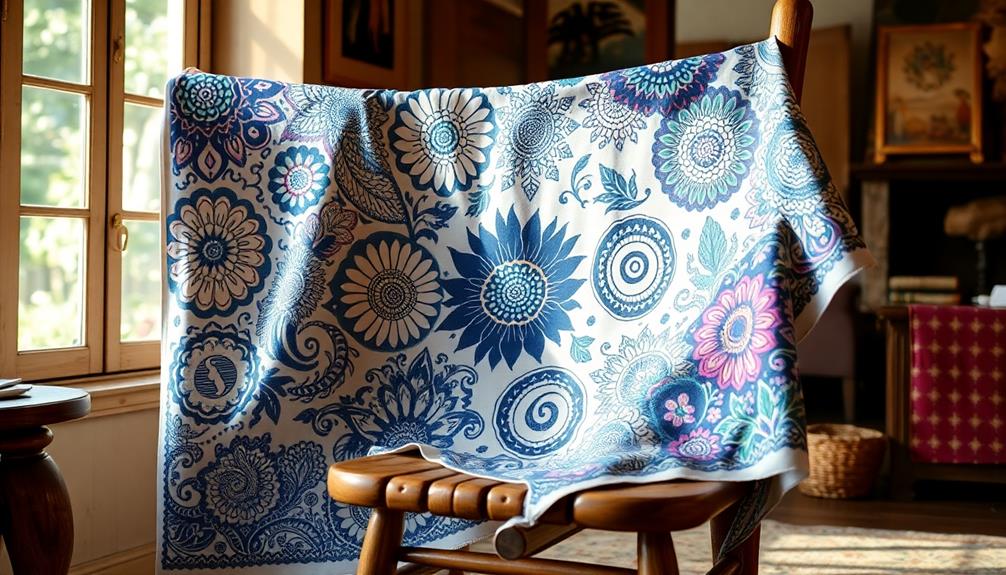
The intricate world of Batik motifs offers a fascinating glimpse into Indonesia's cultural tapestry, where each design serves a purpose beyond mere decoration. Understanding Batik means appreciating the rich symbolism woven into every pattern.
For instance, the Javanese Batik design of the Phoenix Lung-lungan represents interdependence and mutual support, reflecting deep social values. The Kawung motif, with its intersecting squares and circles, historically signified prestige, reserved for royalty, illustrating the cultural hierarchy in Javanese society. Additionally, many Batik patterns, much like the Indonesian decor masks, showcase intricate designs that celebrate traditional craftsmanship.
Furthermore, non-geometric patterns often symbolize regeneration and fertility, showcasing diverse flora and fauna that carry spiritual significance. These motifs connect the wearer to their cultural heritage, transforming them from simple decorative elements into powerful narrative tools.
Take the Udan Liris motif, translating to "light rain," which features diagonal rows of narrow bands symbolizing natural phenomena. This highlights how Batik art can reflect environmental themes as well.
Batik Production Techniques

Understanding the artistry behind Batik motifs naturally leads to exploring the various production techniques that bring these designs to life. The three main Batik production techniques are Batik Tulis, Batik Cap, and Batik Cetak. Each method showcases the cultural heritage of Batik while varying in quality and artistic value.
| Technique | Description |
|---|---|
| Batik Tulis | Hand-drawn designs using a canting tool and wax, allowing for intricate designs that can take months. |
| Batik Cap | Utilizes copper stamps for quicker wax application, maintaining artistic value with efficient production. |
| Batik Cetak | Printed textiles that are more accessible but sacrifice some traditional craftsmanship. |
| Natural Dyes | Traditionally derived from plants like Indigofera and Soga tree, offering rich, vibrant colors. |
While Batik Tulis is often regarded as the highest quality due to the skill involved, Batik Cap and Batik Cetak offer their own unique appeal. Embracing these Batik production techniques not only enhances your home decor but also celebrates the intricate designs and artistic value that reflect a rich cultural heritage.
Modern Interpretations of Batik
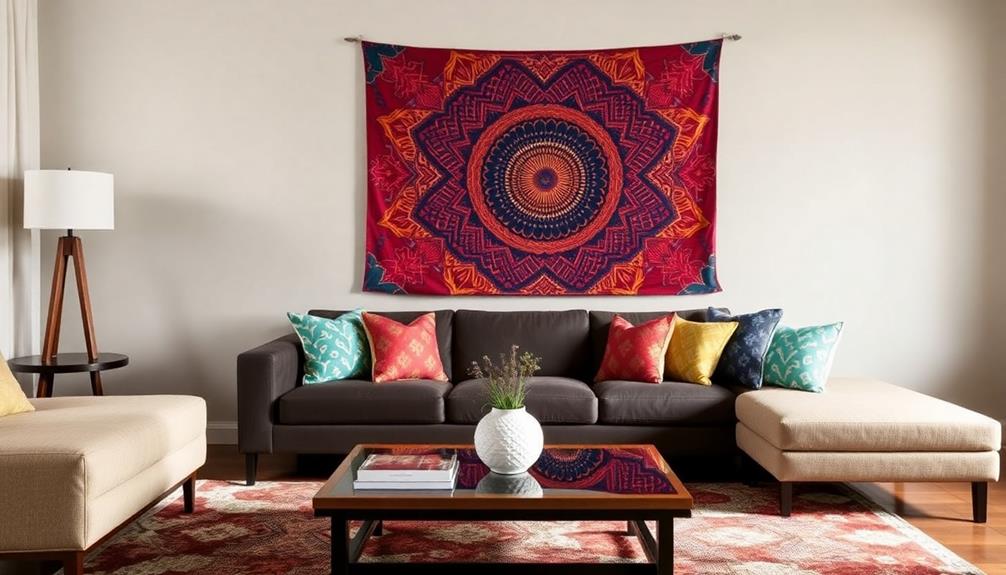
Modern interpretations of Batik have emerged as a vibrant blend of traditional artistry and contemporary design, capturing the attention of a global audience. Designers are now embracing modern Batik by infusing contemporary batik elements with traditional artistic techniques, appealing to younger consumers.
This fusion of traditional patterns and modern aesthetics enhances the visibility of Batik textiles in the home decor market, making it a popular choice for items like Indonesian decorative pillows, which add comfort and cultural heritage to living spaces.
Through innovative ways, designers are expanding Batik's application beyond clothing, incorporating it into accessories and interior decor. Digital printing technology allows for rapid production, enabling designers to experiment with batik designs and customize them to meet diverse consumer preferences.
As a result, unique collections resonate with current fashion trends while preserving the cultural significance of this ancient art form.
Collaborations between artisans and modern designers have also emerged, creating collections that tell contemporary stories and reflect societal values, all while honoring Batik's rich heritage.
Incorporating Batik in Home Decor

Incorporating Batik into your home decor not only highlights vibrant colors and intricate patterns but also connects your space to the rich cultural heritage of Indonesia. The unique artistry of Batik textiles complements other cultural elements, such as Indonesian decor masks, allowing for a cohesive and meaningful decor theme.
You can easily transform your environment by using Batik textiles in various decor items like cushion covers, table runners, and wall hangings. These pieces serve as visually appealing elements that blend traditional motifs with modern aesthetics, making them perfect conversation starters.
By choosing Batik, you support local artisans and promote sustainable practices within the textile industry. Each design often carries nature symbolism, contributing to a calming atmosphere that enriches your home.
Integrating Batik elements, such as curtains or upholstery, allows you to embrace the storytelling aspect of decor, as each piece reflects unique narratives tied to Indonesian heritage.
Whether you opt for bold patterns or subtle designs, Batik can enhance your home decor while celebrating cultural significance. You'll not only enjoy the beauty of these intricate patterns but also appreciate the deeper meanings behind them, connecting your living space to a rich history and artistic expression. By incorporating batik into your home decor, you can bring in elements of tradition and storytelling, adding layers of meaning and significance to your living space. The batik symbolism in home decor can serve as a conversation starter for guests, allowing you to share the cultural and artistic significance behind the patterns and designs. Whether displayed as wall art, incorporated into upholstery, or featured in decorative accessories, batik can add a unique and meaningful touch to any room in your home.
Frequently Asked Questions
What Are the Elements of Batik Design?
Batik design elements include intricate motifs, natural themes, and symbolic colors. You'll notice patterns like the Kawung and Udan Liris, each representing deeper meanings rooted in culture, spirituality, and social values throughout Indonesia's rich artistic heritage.
What Is the Cultural Significance of Batik?
Batik's cultural significance is like an intricate tapestry, weaving together Indonesia's rich history and diverse identities. Each motif you see tells a story, reflecting community ties, social status, and natural beauty, enriching your understanding of its heritage.
What Are the 5 Major Types of Batik Design Motif?
You'll find five major batik motifs: Ceplok with geometric shapes, Udan Liris symbolizing rain, Kawung representing prestige, Tambal Miring reflecting Buddhist influence, and Non-Geometric patterns showcasing nature's beauty and spiritual significance.
What Is Batik Design?
Batik design's a traditional Indonesian textile art, created using wax-resist dyeing techniques. You'll find intricate patterns that reflect cultural stories and values, showcasing themes like nature, spirituality, and social significance in every piece.
Conclusion
By now, you've discovered the rich history and vibrant motifs of batik, along with the intricate techniques that bring them to life. Imagine how these stunning designs could transform your space. Picture the warm embrace of colors and patterns that tell a story, inviting intrigue and conversation. As you consider incorporating batik into your home decor, ask yourself: which piece will you choose to make your environment uniquely yours? The perfect touch awaits—will you seize it?

